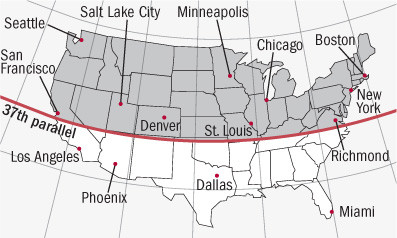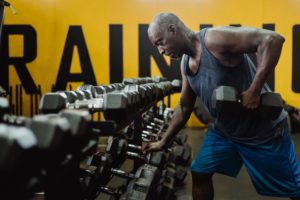Jessie Rard joins us again this week to discuss weight lifting and strength training for bone health. Hormones and Bone Health: Get Strong to Stay Strong is intended for both trans youth on blockers and people of all ages and genders who are interested in preventing osteopenia and osteoporosis.

Jessie (He/They) is a trans/nonbinary circus artist, and personal trainer. He came out in 2013 and finished his transition in 2016. Jessie loves existing at the crossroads of two very niche communities (trans folks + circus artists) and being able to support both. They teach flexibility and weightlifting through their company, Twisted Fox Training. Outside of work Jessie loves gardening, foraging, and cooking. IG: @twistedfoxtraining
What do trans youth on puberty blockers have in common with our elders?
Both of these groups of people have lower levels of primary sex hormones, and this puts them at risk for osteopenia and osteoporosis.
I know medical terms and diagnoses can sound scary, but this is not something to cause worry or fear. In terms of your health and choices, it is important to be aware of the possibilities, collect facts, and be able to more confidently make decisions about your transition and life.
First, let’s start with some definitions
Osteopenia is simply defined as having lower than normal bone density. It’s not a disease or a disorder, just something that happens naturally as we age. Osteopenia isn’t painful or dangerous, but it can signal that someone is at a higher risk for developing osteoporosis.
Osteoporosis is a medical condition where bones become weak and brittle, usually due to age-related loss of bone density. As we age, cells are not regenerated or replaced as quickly as in youth, and bones are included in this body process. (1)
Who is at risk?
Loss of bone density happens primarily due to the natural aging process, and some genetic predispositions can increase this. Osteoporosis is more common in white and Asian women post-menopause.
The main risk factors are:
- Lower hormone levels due to menopause/age
- Genetic predisposition in white and Asian heritages
- Lack of calcium
- Lack of vitamin D
- Eating disorders and malnutrition
But I’m young, how does this apply to me?
The main thing to know about low bone density is that it is preventable. But, the prevention happens years in advance, before people are even aware their actions are affecting their bone mass in mid-life and beyond. If you learn a little bit now, your future self will thank you!
Puberty Blockers
Some trans youth have the opportunity to begin their medical transition using puberty blockers. This medication blocks the primary sex hormones estrogen and testosterone, effectively hitting pause on some of the most gendered aspects of puberty. (2, 3)
While puberty blockers are considered to be safe and effective, the suppression of hormones can be very similar to the reduced estrogen and testosterone that happens naturally post-menopause and in old age. While using hormone blockers, youth may not be building as much bone density during peak growing years, which would increase their risk for bone density related issues later in life.
Thankfully, blockers are not a long-term medication. When someone decides to discontinue use, and either lets puberty happen or switches to estrogen or testosterone hormone therapy, the ability to build bone density returns with the body’s primary sex hormones. Bone density continues to build until approximately 35 years of age. So, while trans youth on blockers can have a period of months or years without as much bone density accumulation, there are still many years where they can build it up to help prepare the body for a long, healthy life.
In all stages of life, and for all people trans or cis, here are some ways to build strong, healthy bones, and reduce the risk of osteoporosis later in life.
Get enough calcium in your diet by eating things such as dairy products, spinach, broccoli, and other dark green veggies, salmon, beans, tofu, and other soy products. Cereals, breads, and orange juice are often fortified with added calcium as well. No matter your diet or food restrictions, you should be able to find a calcium rich food that works for you.
Vitamin D helps the body absorb calcium so that your bones can use it. Those of us who live above 37th parallel north and below 37th parallel south often need to supplement vitamin D to make up for the lack of sunshine. In the US that includes everyone who lives north of San Francisco, Denver, St. Louis, and Richmond Virginia. If you are adding a vitamin D supplement, be sure to ask your doctor about the proper dose.
Build a healthy relationship with food and your body. The trans community is at a higher risk of developing eating disorders due to gender dysphoria and existing in a body that society puts a lot of pressures and expectations on. One of the best things you can do to keep your bones healthy is to heal your relationship with food. Get the help and support you need if you are experiencing disordered eating.
Exercise. Resistance exercise has been shown to increase bone density and improve bone health. Muscles are built and strengthened through a process of exercise-induced micro tears, followed by rest and repair. Bones build density and strength in a similar, albeit slower, manner with loaded exercise such as weight lifting or resistance band training. (4)
Getting Started
There are 6 main movement categories that most exercises fit into. Click on each to see a playlist of exercise variations to try.
There are thousands of exercises and you can find explanations for all of them free online. While the availability of this information is amazing, it can get confusing very quickly, especially for beginners. Start with the lists above, try one exercise at a time, and keep the ones you enjoy. You can use 2-3 exercises to form a workout, it doesn’t have to be long or strenuous to count.
Pick exercises that are simple and uncomplicated. It’s going to be easier to learn the movement of a squat than it is to throw a barbell overhead in an olympic lift. You will pick up the new skill quicker, easier, and safer. All wins! The basics may not look fancy, but they get you the best results.
When learning a new exercise, focus on moving slowly through the entire thing, start to finish. This is called tempo or time under tension and helps build strength and control.
It is important for everyone to stay away from ego lifting, but especially kids and teens who are still growing. Lifting heavy helps strengthen muscles and bones, but heavy is relative to each individual’s body and strength. Focus on good form, enjoying your workout, and making progress toward your goals instead of lifting the heaviest weight or competing with others. Your body will thank you.
Machines vs. Free Weights
In your average box gym you can find rows of cardio equipment and an assortment of weight machines, each for a specific muscle group or body part. Using these machines absolutely counts as weight lifting and resistance training. Often, the machines will have graphics with them showing how you use the machine and what muscles are being worked. For this reason, machines can be a great entry point for beginner gym goers. Try out each machine one at a time, if something is confusing you can always skip it or ask the internet or a fellow gym goer how it works. Once you find your favorites, use 2-3 machines for a short but well-rounded workout.
Free weights are things like dumbbells, kettlebells, and barbells. Most 24 hour gyms have a tiny free-weight section if anything at all. But, weights and other equipment such as squat racks, benches, and pullup bars are becoming more common and available due to the rise of specialty gyms for weightlifting and crossfit. Free weights are great for many reasons, lighter weights can be bought for home workouts, you can complete so many exercises with just 1-2 pieces of equipment, and not using a machine means you are using more stabilizing muscles to move and balance. I personally, am team free weights all the way.
Barbells vs. Dumbbells
Dumbbells are often the easiest piece of weightlifting equipment to start with. They come in all sizes, from one pound up to 100 lbs or more! You can start at home with a set of 10 or 15 pound dumbbells and get a great workout, or find a gym for more access to equipment.
Barbells are the long bar that you can add weighted plates to. While I personally love barbell lifting, it can have a bit more of a learning curve. The standard barbell weighs 45 lbs without any additional weight on it! If you are just starting out, that might be too much weight for some exercises. Barbells for home use weigh around 12-15 lbs, and if you are at the gym you can ask if they have a lighter barbell to start out with. Some gyms will have lighter and thinner barbells that are easier for smaller hands to grip, but you may have to ask for a women’s or youth barbell.
DO NOT BIND WHILE EXERCISING
Use a compression sports bra or compression shirt and add a loose shirt or sweatshirt over the top to minimize the appearance of curves, but do not wear your normal chest binder. Tucking, while not as dangerous while exercising, can be uncomfortable. It is going to be up to each person to make decisions regarding comfort and safety while working out.
Wrapping it up
It's never too late to start
While adding weighted exercise before age 35 is the best thing you can do for bone health, there is no such thing as too late. Starting to lift at any age will help slow the progression of bone density loss. Studies are even showing that weight training can help rebuild bone density in people who already have osteopenia.
If you are in midlife and want to start lifting, or have osteopenia and are wondering what you can do about it, I personally recommend Tina Tang. She is a wealth of free information, and an excellent coach if you choose to invest in coaching. Tina is 51, started lifting in her 40s, and focuses on helping women and nonbinary people in midlife. I coach for one of her programs and love the community she has created with her business partner.
Final words of advice
As a trans person, I know that gyms don’t always feel safe. Exercising at home can be a great option, or you can search QueerDoc’s directory to find trans friendly gyms in your area. Don’t be afraid to ask for help. Help could come in the form of a workout buddy, accountability partner, or a coach. Transgender coaches exist! Hiring a trans coach can make a world of difference, they understand what you are going through and can help you feel more safe and welcome while learning a new skill. Even if you don’t have the money to invest in coaching, you can find so much information on Instagram. Follow trans coaches and athletes and don’t be afraid to say hi, we were all beginners once and community is important.
Citations
- Definitions and medical info from: https://www.mayoclinic.org/diseases-conditions/osteoporosis/symptoms-causes/syc-20351968
- https://www.stlouischildrens.org/conditions-treatments/transgender-center/puberty-blockers
- https://queerdoc.com/puberty-blockers-faq/
- https://www.ncbi.nlm.nih.gov/pmc/articles/PMC6279907/




